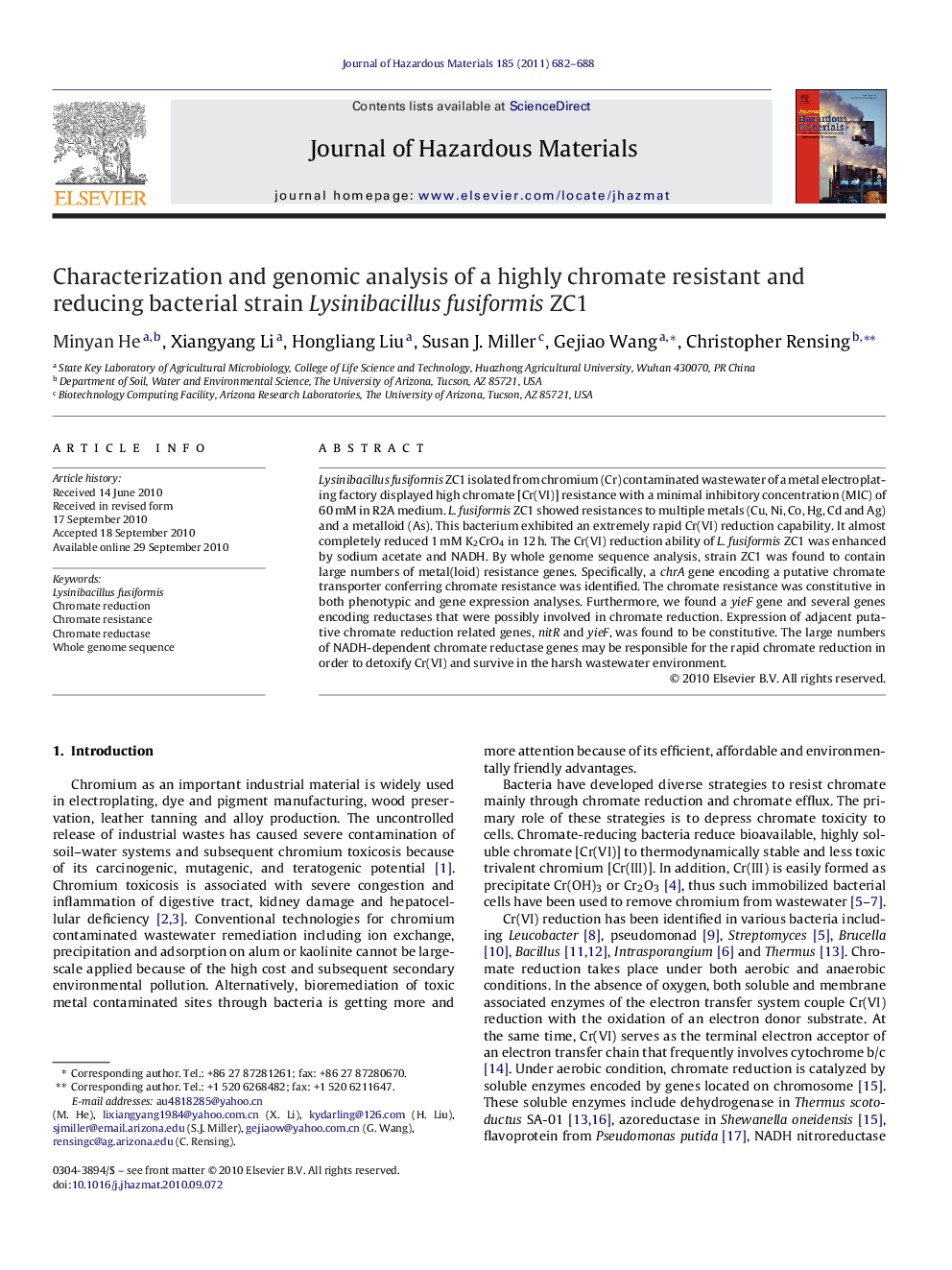| Article ID | Journal | Published Year | Pages | File Type |
|---|---|---|---|---|
| 579842 | Journal of Hazardous Materials | 2011 | 7 Pages |
Abstract
Lysinibacillus fusiformis ZC1 isolated from chromium (Cr) contaminated wastewater of a metal electroplating factory displayed high chromate [Cr(VI)] resistance with a minimal inhibitory concentration (MIC) of 60Â mM in R2A medium. L. fusiformis ZC1 showed resistances to multiple metals (Cu, Ni, Co, Hg, Cd and Ag) and a metalloid (As). This bacterium exhibited an extremely rapid Cr(VI) reduction capability. It almost completely reduced 1Â mM K2CrO4 in 12Â h. The Cr(VI) reduction ability of L. fusiformis ZC1 was enhanced by sodium acetate and NADH. By whole genome sequence analysis, strain ZC1 was found to contain large numbers of metal(loid) resistance genes. Specifically, a chrA gene encoding a putative chromate transporter conferring chromate resistance was identified. The chromate resistance was constitutive in both phenotypic and gene expression analyses. Furthermore, we found a yieF gene and several genes encoding reductases that were possibly involved in chromate reduction. Expression of adjacent putative chromate reduction related genes, nitR and yieF, was found to be constitutive. The large numbers of NADH-dependent chromate reductase genes may be responsible for the rapid chromate reduction in order to detoxify Cr(VI) and survive in the harsh wastewater environment.
Keywords
Related Topics
Physical Sciences and Engineering
Chemical Engineering
Chemical Health and Safety
Authors
Minyan He, Xiangyang Li, Hongliang Liu, Susan J. Miller, Gejiao Wang, Christopher Rensing,
